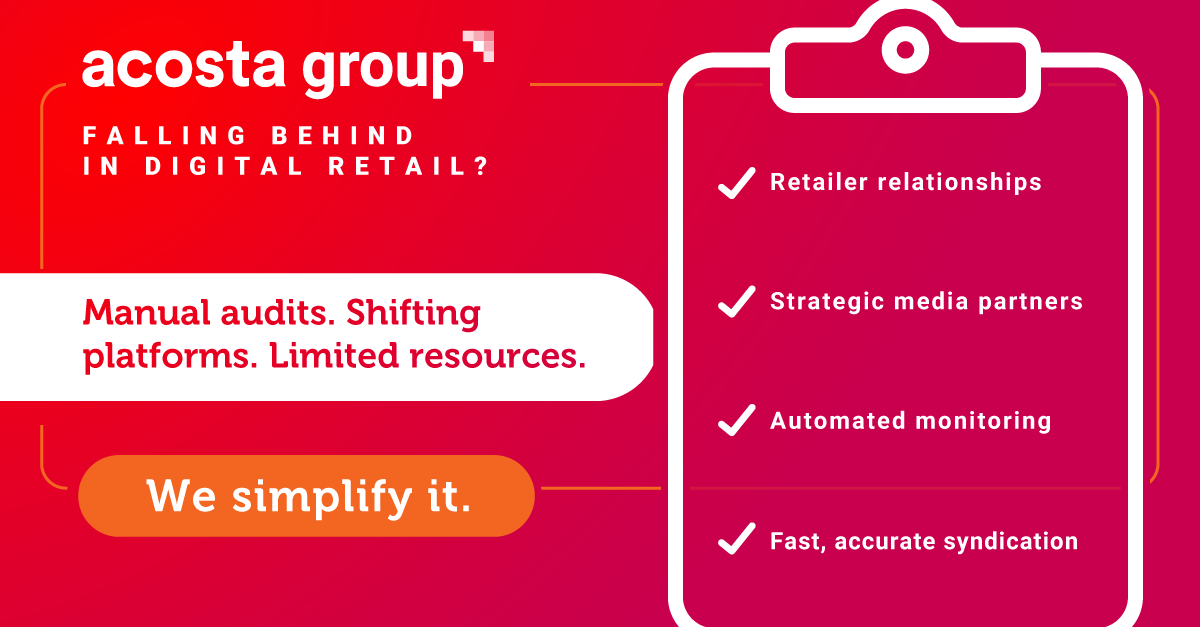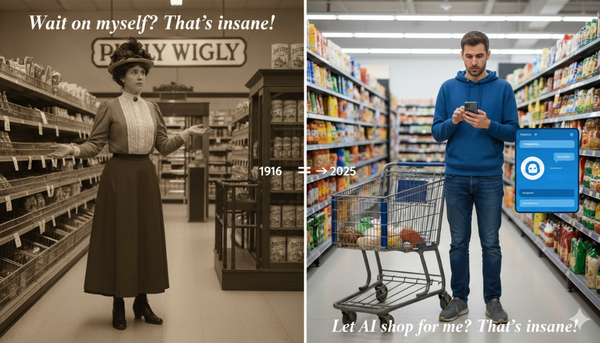While We Debate What's 'Really' Agentic, Retail Media's Foundation Is Already Shifting
Today's instant checkout might not meet the technical definition of agentic commerce. DBut the coming disruption to the retail media business model doesn't care about semantics.

The retail industry loves a good semantic debate. Right now, the hot topic is whether OpenAI's new instant checkout feature counts as "agentic commerce" or if it's just a glorified app integration.
The argument from definition purists is that ChatGPT's checkout integration with Walmart and Etsy doesn't qualify—it's reactive, guided by human prompts and confirmations at multiple steps.
Meanwhile, OpenAI is already calling their system the "Agentic Commerce Protocol," retailers are scrambling to integrate, and consumers are starting to normalize AI-assisted shopping at scale. According to Klaviyo's new Global AI Shopping Index which was released a few days ago, 78% of consumers have already used AI for shopping or product research in the past three months.
Here's my take: while we're busy arguing about definitions, the ground is already shifting under retail media's $177 billion foundation.
The Definition Wars
The industry has split into two camps. The purists insist that true agentic commerce requires proactive, autonomous agents. Here is the definition from Mastercard:
“Agentic commerce is a new form of online and mobile shopping, in which an AI agent ‘closes the loop’ or completes tasks for a user — such as searching for items, comparing options and making a purchase — with limited or no manual inputs needed from that user.”
And from Salesforce:
“Agentic commerce doesn’t just recommend what to do — AI agents actually do it … from acquisition tasks in marketing to conversion optimisation in commerce.”
My friend and retail industry analyst from EMARKETER Sarah Marzano says that in her book, Instant Checkout isn't the proactive or autonomous enough to meet the definition. "What we’re seeing with the checkout integrations from ChatGPT x Walmart, Etsy etc, doesn’t check any of the boxes for Agentic AI capabilities - as the experience is end-to-end reliant on the human user’s prompts and guidance," she told me.
The pragmatists aren't wasting breath in any debate. They argue that any AI assistance in shopping represents progress toward agentic commerce. Ecommerce veteran Scot Wingo developed a framework shared on his newsletter Retailgentic that shares a definition of staged sophistication. By Wingo's classification, we're now at Level 3: AI can help you find products and even complete transactions, but it's not making autonomous decisions. (Disclaimer, I am an advisor to Scot's company ReFiBuy)

Here's what's getting lost while we're missing the forest for the trees: even "not-really-agentic" instant checkout is capturing transaction data that used to belong exclusively to retailers. When OpenAI processes a Walmart checkout, both companies now have that purchase signal. The retailer's data moat—the foundation of their 40%-margin off-site advertising business—just got a bit shallower.

Image credit: Rafael Correa Gomes created this diagram based on a detailed breakdown of Chat's Instant Checkout Protocol documentation from Pipe17 COO Kelly Goetsch (LinkedIn, October 15, 2025).
Why Retail Media Should Care Right Now
Let me connect this to retail media's economics. In an earlier essay in August, I outlined three revenue pillars for retail media networks: on-site advertising (70-80% margins), off-site data monetization (~40% margins), and in-store/trade marketing (near 100% margins), and how the former 2 pillars are put at risk by agentic commerce.
Even if instant checkout isn't "truly" agentic by purist standards, it's already undermining these pillars. Klaviyo's data from this week shows 56% of consumers plan to use AI shopping assistants during Black Friday this year.
And a shopper panel in June by Acosta Group – before Instant Checkout was a glimmer in the eye of pundits like me – shows that 55% of Gen Z consumers are interested in AI-enabled buying. (Disclaimer, Acosta Group sponsors this newsletter.)
Acosta Group’s retailer intimacy is legendary—merchants answer their calls.
You're not going to find that access at the same scale with any other partner out there. That expertise with both retailers and shoppers fuels its Connected Commerce team, which offers digital shelf, retail media, and data analytics all under one roof. Tap into 100 years of retailer relationships and award-winning digital commerce capabilities.
The Retail Media Disruption Timeline
While the current iteration of AI-enabled shopping might not meet the formal 'agentic' definition, if indeed we proceed to Wingo's level 4 and 5 of agentic commerce capabilities, there is the potential to unseat retailer's current golden goose: retail media ad revenues.
Missing the Forest for the Trees
In 1997, Barnes & Noble sued Amazon over its claim to be the “world’s largest bookstore,” arguing that Amazon was really just a book broker with no physical shelves. While Barnes & Noble focused on semantics, Jeff Bezos was already moving beyond books toward building the “everything store.”
We're having the wrong conversation. Instead of debating whether instant checkout qualifies as agentic, retailers should be asking:
- What happens when 10% of my transactions flow through AI intermediaries who also own that purchase data?
- How valuable is my first-party data when LLMs also have overlapping purchase signals?
- Do I follow Walmart's open approach, welcoming external agents?
The semantic debate misses the forest for the trees. Consumers are already adapting—78% have used AI for shopping in just the last quarter.
The Warning Shot
Today's instant checkout might not meet the technical definition of agentic commerce. For retailers relying on their media businesses as a source of growth and profits, I'd say, so what? Agentic commerce threatens data exclusivity, and is conditioning new behaviors that side-step your ecomm site. By the time we reach Wingo's Level 5—truly autonomous agents—any retailers still debating definitions will find their high-margin businesses already disrupted.








